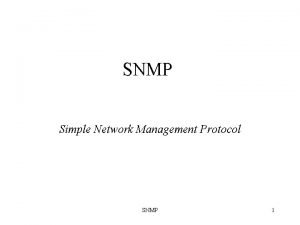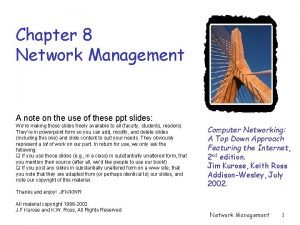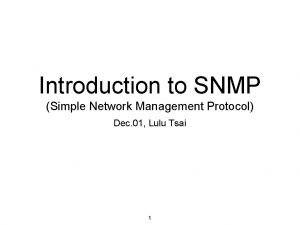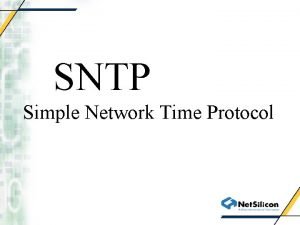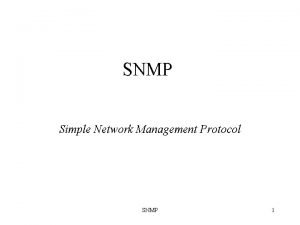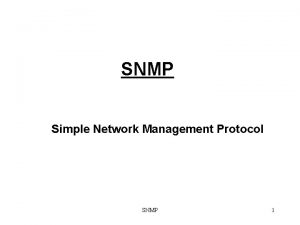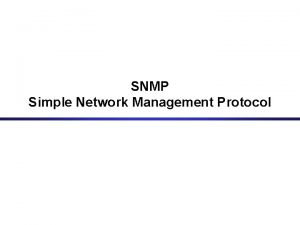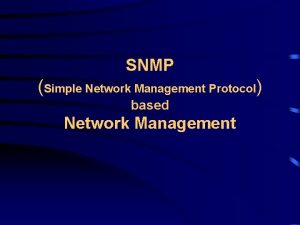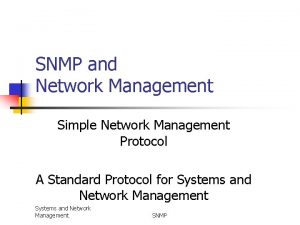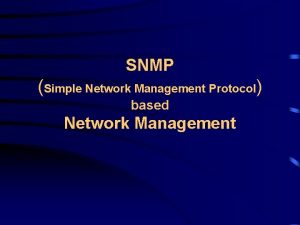Introduction to SNMP Simple Network Management Protocol Dec













- Slides: 13

Introduction to SNMP (Simple Network Management Protocol) Dec. 01, Lulu Tsai 1

Outline • What is SNMP and what can SNMP do? • Roles • Versions • Conclusion 2

What is SNMP? • A protocol that allows users to proactively view what’s going on on the devices in your network and fix issues before they become major problem. 3

Role • Manager • Agent • Management Information Base(MIB) 4

Manager • A. k. A Network Management Station(NMS) • Use SNMP to get the information from Agent 5

Agent • An Agent is usually a program that installs on the device which is monitored. • When get the commands from the Manager, it will return the data. • Beside return the data the Manager want, it will automatically report to Manager as Trap when error occurs. 6

Manager —> Agent Comma nd Instruction Manager sent to Agent to Get. Req read the data that Agent uest get Get. Next Request Manager sent to Agent to get the next object owe to that SNMP restrict that Manager can only get one data at a time. Get. Res ponse Get the response from the other commands. If the command run successful, it will return the data. If not, it will return the error message. Manager <— Agent Set. Req Set the value of the objet uest on the Agent If somethings goes wrong on the Agent, it will report Trap to the Manager. 7

Management Information Base • Standard and Private • Standard MIB is suitable for all the network device, private MIB is defined by the company in order to show the unique data of their device. • Private MIB should apply to the department that concerned. 8

• MIB is a tree structure, a hierarchical classification. Where each node has their own particular type, for easily identification (Object Identifier, OID). 9

Version(v 1) • Only defined the relation between Manager and Agent, but no Manager and Manager. • Cannot deliver a lot of data once. • Security issues. • Polling

Version(v 2) • Add”getbulkrequest” command. • Add”inform. Request” command. • use DES and MD 5

Version(v 3) • Ensure that all the data is from the legitimate sources. • Encrypt the data when transmission. • Use cryptography to make sure that data won't be tampered during transmission.

Conclusion • Easy to use • Graphs
